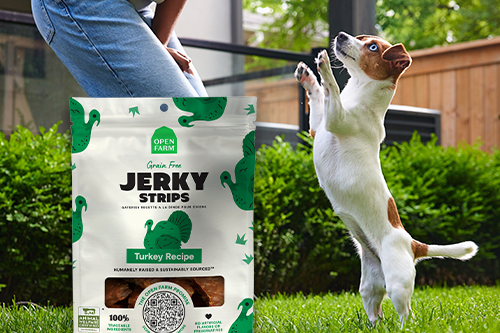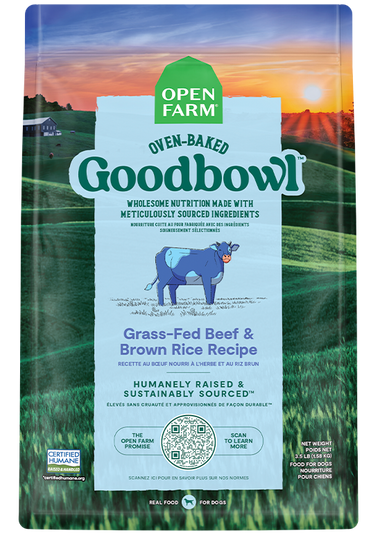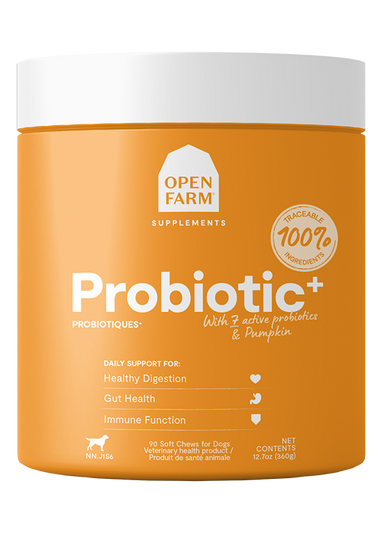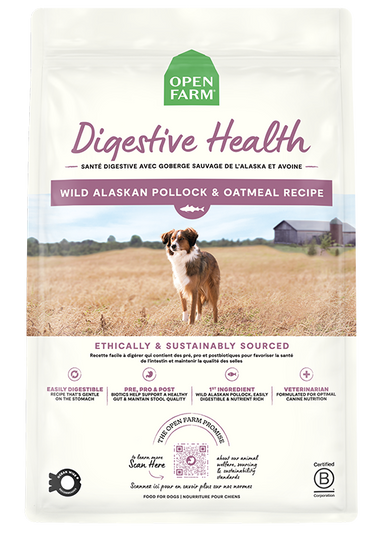You know how rough it is if your doggo has a sensitive tummy. Sensitive stomachs in dogs can lead to diarrhea, painful gas, and other discomforts. The remedy for these ailments is often found by changing to a more suitable diet. But finding the best food for dogs with sensitive stomachs is no walk in the park. Thankfully Open Farm is here to help. Let’s learn all about nutrition options to keep your pooch thriving.
Understanding Sensitive Stomachs in Dogs
Your dog’s upset gut is often caused by food intolerances, allergies, or gastrointestinal conditions. You’ve witnessed the aftermath and it’s not pretty. Diarrhea, vomiting, flatulence, and inconsistent stool quality are all par for the course when your dog has a sensitive tummy. There’s a way to improve it, though. Choosing the best dry dog food for sensitive stomachs can help your dog live its best life.
Key Features of the Best Dog Food for Sensitive Stomachs
As you research dog food for gastrointestinal (GI) health, focus on the following:
- Easily Digestible Ingredients: Foods with simple, high-quality proteins like chicken, turkey or fish are easier on your dog’s gut.
- Probiotics and Prebiotics: Probiotics support a healthy gut microbiome, while prebiotics nourish beneficial gut bacteria, which helps support a healthy digestive tract. Open Farm’s new Digestive Health Wild Alaskan Pollack & Oatmeal recipe is a unique, first to market digestion recipe featuring pre, pro, and postbiotics to support a healthy gut and maintain stool quality.
- Fiber for Digestive Health: Soluble fibers like those found in oatmeal and pumkin can help regulate stool consistency and improve overall gut function.
- Low Fat Content: A lower-fat diet is less harsh on the GI tract, especially if your four-legged friend has gut issues.
Tips for Transitioning to New Dog Food
Avoid making a sudden switch to your dog's diet, as an abrupt change can cause digestive discomfort. Instead, introduce new food gradually to help their system adjust smoothly and prevent further stomach upset. Pay close attention to the steps below:
- Gradual Transition: Mix 25% of the new food with 75% of the old food for the first few days. Slowly increase the proportion of new food over 7–10 days.
- Monitor Symptoms: Keep an eye on your dog’s stool quality, appetite, and energy levels during the transition.
- Hydration is Key: Be sure your dog has access to fresh water, especially if you’re changing to dry dog food.
This article is meant only as an example of what might work well for your pet, please reach out to our Pet Parent Experience Team if you have any questions about your pet’s own unique circumstances! To ensure these products are a good fit for your furry friend, we also recommend consulting your vet about any new diet, or environment changes, especially if there is a medical concern. They should be able to help as you and your vet know your pet’s medical history best!








































 Sign In
Sign In
 Create Account
Create Account















